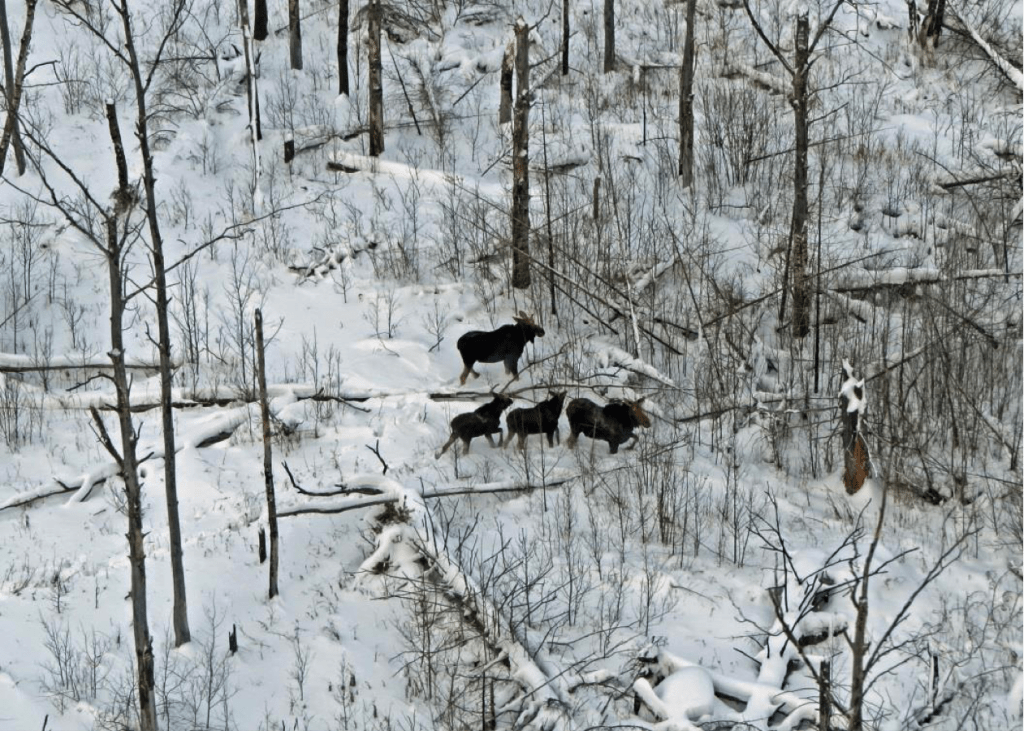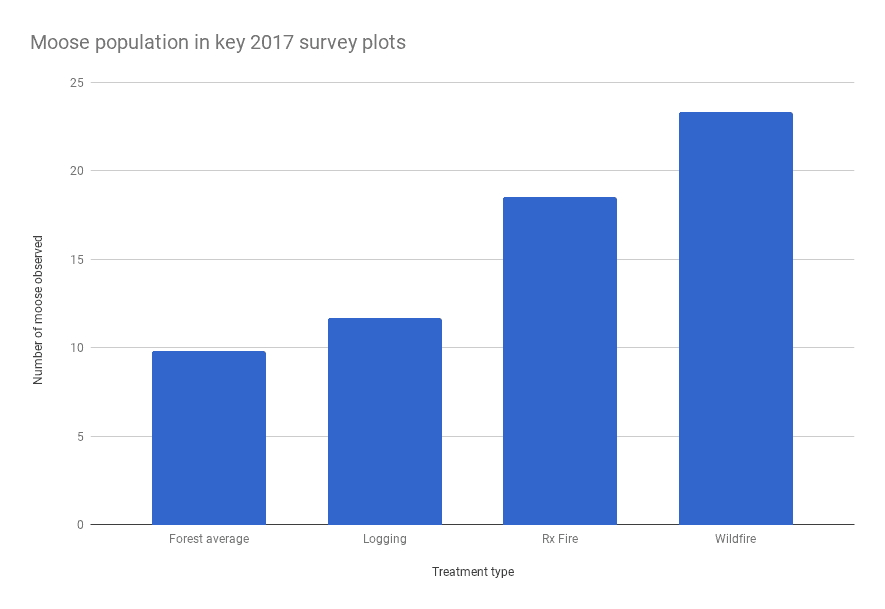
With Minnesota’s moose population at half the size it was 10 years ago, scientists and land managers have been scrambling to understand how to help the animals.
New data provided by the Fond du Lac Band of Lake Superior Chippewa provides some helpful hints. While factors like wolves, deer, and global warming play a role, a tribal biologist says habitat is key.
A comparison of moose sightings in areas of the Superior National Forest which were recently logged, and areas which had been burned during prescribed and wild fires, and areas with no major disturbance, has shown moose find the habitat they need in areas regrowing from fire.
“If you like moose, fire should be your friend,” Mike Schrage, band biologist, told the Timberjay.
The numbers don’t lie
Because moose like to browse on early successional tree species, forest disturbance has long been believed to be a necessary element for healthy habitat. Recent aerial surveys have provided compelling clues about how fire is most effective at creating the conditions moose prefer.
Five years of flying over nine study plots — three each in areas disturbed by logging, prescribed fire, and wildfire — has shown the highest numbers of moose are found in the burned areas. The plots are included in the total of 54 plots surveyed each year by the Department of Natural Resources.
All the plots are 8,544 acres, and across the region, contained an average of about 10 moose. But plots which had significant burned areas had the highest numbers of moose.
While areas that had been logged did show moose numbers at or above average, it was in burned areas where the greatest density was found, with some plots hosting more than 30 of the animals.
Schrage told the Timberjay that some plots that were partially burned had very high moose numbers in the burned area, and almost none outside it.
Fire benefits
While both timber management and fire can create young forest, fire has the added benefit of killing the land snails which transmit deadly brain parasites from whitetail deer to moose. Biologists believe it can take several years for brainworm transmission to resume after a fire.
It also can reduce winter tick populations, which can be a major nuisance and threat to moose’s health.
Fire also returns nutrients to the soil, meaning regrowth is as nutritious as possible.
“What this shows, more than anything, is that we very likely can rebuild our region’s moose herd, if we’re willing to adjust our forest management methods to create better habitat for moose,” wrote the Timberjay’s Marshall Helmberger.
Biologists plan to continue monitoring the same nine plots for at least another 15 years to study long-term trends.
Read more:
- The data on moose and fire – Marshall Helmberger, Timberjay (subscribers only)
- 2017 Moose Habitat Survey (PDF) – Mike Schrage, Fond du Lac Resource Management Division


